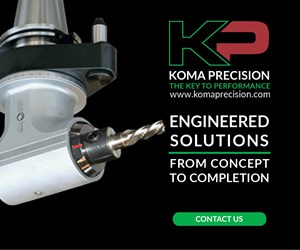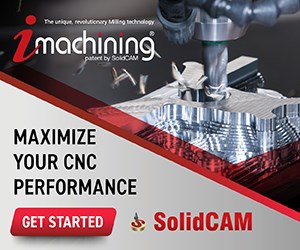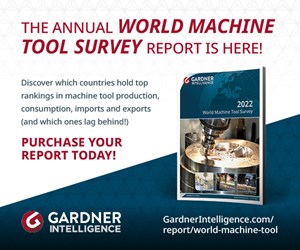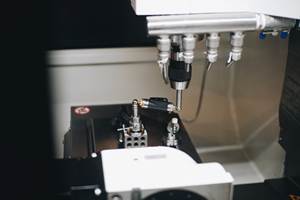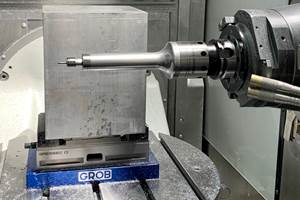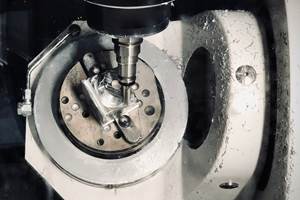EDM And Automation: Not 'Oil And Water' Any Longer
Electrical discharge machining (EDM) was developed in the 1940's, used sparingly for burning out broken taps and dies until the 1970's, then utilized for single part operations, moldmaking and punch-die production in small lots until about ten years ago. This is when the first CNC versions emerged from several manufacturers, including Mitsubishi. Mitsubishi was said to lead primarily because they were the only EDM builder who also built their own machine controllers (through a sister division of the company). Today, CNC and manual machines are still produced, with several thousand units sold each year.
Share



Autodesk, Inc.
Featured Content
View More



Hwacheon Machinery America, Inc.
Featured Content
View More
Takumi USA
Featured Content
View MoreElectrical discharge machining (EDM) was developed in the 1940's, used sparingly for burning out broken taps and dies until the 1970's, then utilized for single part operations, moldmaking and punch-die production in small lots until about ten years ago. This is when the first CNC versions emerged from several manufacturers, including Mitsubishi. Mitsubishi was said to lead primarily because they were the only EDM builder who also built their own machine controllers (through a sister division of the company). Today, CNC and manual machines are still produced, with several thousand units sold each year.
Electrical discharge machining takes two forms: namely, ram machining and wire machining. The machines on the market today have various speeds, accuracies, workpiece sizes and other features available to cut a variety of jobs and an ever-increasing range of materials.
But while most tool and die shops, practically all moldmakers and a growing number of dedicated job shops and in-house metalworking operations utilize EDM, few are aware of the most dramatic advancement in this machining technique.
Typically, the word "automation" conjures up an array of images, from the lights-out auto assembly line to the dishwasher manufacturing plant where human intervention in the component assembly process is practically nil, to the pharmaceutical manufacturer's clean room, where robotic hands even fill the test tubes.
In addition, the whole notion of EDM is usually mated to an idea of a single station, single workpiece, start-to-finish machine tool, whose chief advantage is a burr-free piece requiring little or no secondary operation, in sharp contrast to conventional chip-cutting.
A typical set-up for EDM is a progressive die block, where a standard size block is milled, drilled, tapped and heat treated then set into an EDM worktank, programmed and cut, often in an extended unattended machining operation. Machine advancements such as the auto-threader, automatic wire rethreader, automatic hole locator and other features made this set-up a working reality over 10 years ago.
Today, that same job can be channeled into one of several wire machines, depending on the available machine's open time, the rough versus skim cuts involved, the urgency of the job and the off-the-shelf availability of raw materials. The software needed to accomplish such production management is already on the market.
That same job can be made as part of a single machine workcell set-up. This seemingly contradictory notion is absolutely feasible today, using software, manipulators and a pallet changer available from several manufacturers.
A 3R Workman pallet and electrode changer feeds workpieces and tools to a Mitsubishi ram EDM, equipped with a multi-position tool changer. The workpieces need not be the same, as the software is readily available to machine different pieces with different electrodes at designated times in a designated yet easily changed sequence. A simple M-code function drains the fluid in the work tank and opens the hydraulic door.
System 3R, along with other companies, has offered ram EDM users a variety of toolchangers, workpiece pallets and workholding devices for years. A number of such devices can facilitate an automated system, owing to their precision positioning, indexability and zero-point referencing.
Workpieces which have similar but not identical working envelopes can be fixtured and referenced in a CMM, for example, thus creating the base line program from which a batch of such parts can be produced, as the machine tool works in concert with a manipulator, tool changer and/or robotic handling device, controlled by cell control software.
There is said to be marked improvement possible when simple toolchangers, workpiece changers and pallet changers are added to a CNC-EDM. Basic M-code functions are utilized and, through remote buffer monitoring, a production management supervisor can instantly track the work throughout, on any machine in this virtually operator-less environment.
Anders Utterstrom, National Sales Manager for System 3R, offers these insights on the subject of how best to go about automating wire or ram EDM set-ups: "There are several elements for customers to consider. First, I point out that automation in itself is not the goal, making the machine as profitable as possible, is."
"What makes automation at any level possible? It's the newly developed electrode and pallet systems with a repeatability within 0.00008-inch. Without that accuracy of repetition, automation wouldn't be possible."
"A typical set-up today is a 16-position automatic tool changer (ATC) which, when used with a pallet changer, can run a large number of different workpieces in a fully unattended mode. It's not an exaggeration to say an EDM can now be programmed to run for days at a time, because the electrodes and workpieces can be programmed and shuttled through the work area with exact accuracies. Software is also readily available to change the work order of the jobs, to accommodate schedule requirements."
Mr. Utterstrom urges a strong caution, at this point: "All this automation is great, but what are little problems on a manual EDM with an operator, can become huge problems, when an automated system goes astray. Two examples will suffice. In a ram set-up, if just one electrode is loaded 90 degrees off, the whole job could become scrap. Likewise, if the wire runs out or a filter clogs on a WEDM in the night, considerable lost production could occur. So, some system safeguarding and a little pre-planning is advisable before making this commitment."
Taking a "building block" approach to automation, based on the workload, workpiece variety, scheduling, manpower considerations and other production factors, is the smartest course, concludes Mr. Utterstrom.
Mike Rogers of Automation Tech-nologies International, Inc. (ATI, Inc.), Buffalo Grove, Illinois, a system integrator and software development company, adds, "Many EDMers could improve on the shop average of 1500-2000 hours annual use per machine through scheduling improvements, faster changeover, better use of the unattended cutting capabilities of even a single machine and the integration of data from other CNC equipment in the shop such as a CMM to enhance the true CNC nature of their EDMs.
Automation Technologies International, Inc. has an 8-step program which is the precursor to an automation structure being developed, according to Mike Rogers, who runs ATI, Inc. with founding partner, Peter Achs.
The 8-step program entails:
- Standardization of Work
- Job Planning—analyzing these variances and determining a system for optimizing production schedules that a shop improves;
- CNC Programming
- Raw Material Prep
- Work Flow
- Tooling/Palletization
- Presetting of work outside of the machine, either at a setup station or CMM
- Auto-Loading and Unloading
"No more fudge factors," as Mr. Rogers puts it, "means a punch and die which might have been five-thousandths off on either side and would be adjusted by the operator to make the right fit, even though the specs were off, simply can't happen anymore." The implications for shops doing SPC/SQC/ISO work are obvious. And, he mentions emphatically, "No more dry-runs and program editing on the machine."
In "traditional" thinking, it's true oil and water do not mix, though both are serviceable dielectrics for an EDM work tank.
However, in the fast-paced, competitive arena of today's metalworking business, EDMing and automation not only mix well, their combination creates a formidable infrastructure for your captive or job shop operation. MMS
Click here to learn more about supplier MC Machinery Systems, Inc..
Related Content
Ballbar Testing Benefits Low-Volume Manufacturing
Thanks to ballbar testing with a Renishaw QC20-W, the Autodesk Technology Centers now have more confidence in their machine tools.
Read MoreHigh RPM Spindles: 5 Advantages for 5-axis CNC Machines
Explore five crucial ways equipping 5-axis CNC machines with Air Turbine Spindles® can achieve the speeds necessary to overcome manufacturing challenges.
Read MoreHow to Successfully Adopt Five-Axis Machining
While there are many changes to adopt when moving to five-axis, they all compliment the overall goal of better parts through less operations.
Read MoreThe Future of High Feed Milling in Modern Manufacturing
Achieve higher metal removal rates and enhanced predictability with ISCAR’s advanced high-feed milling tools — optimized for today’s competitive global market.
Read MoreRead Next
5 Rules of Thumb for Buying CNC Machine Tools
Use these tips to carefully plan your machine tool purchases and to avoid regretting your decision later.
Read MoreRegistration Now Open for the Precision Machining Technology Show (PMTS) 2025
The precision machining industry’s premier event returns to Cleveland, OH, April 1-3.
Read MoreBuilding Out a Foundation for Student Machinists
Autodesk and Haas have teamed up to produce an introductory course for students that covers the basics of CAD, CAM and CNC while providing them with a portfolio part.
Read More

























.png;maxWidth=150)
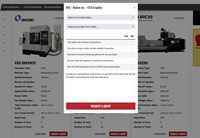
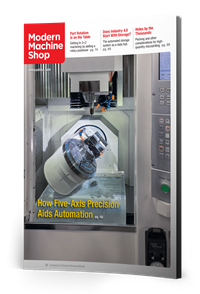

.jpg;maxWidth=300;quality=90)

